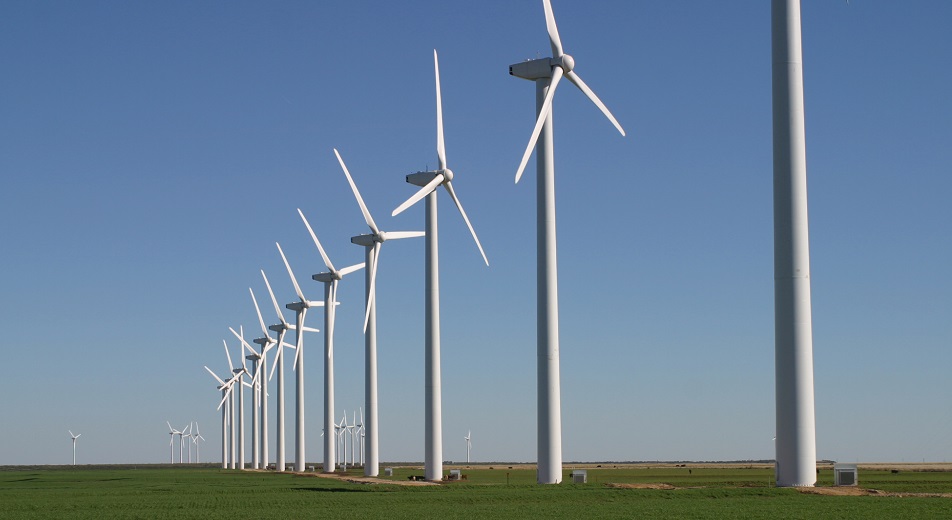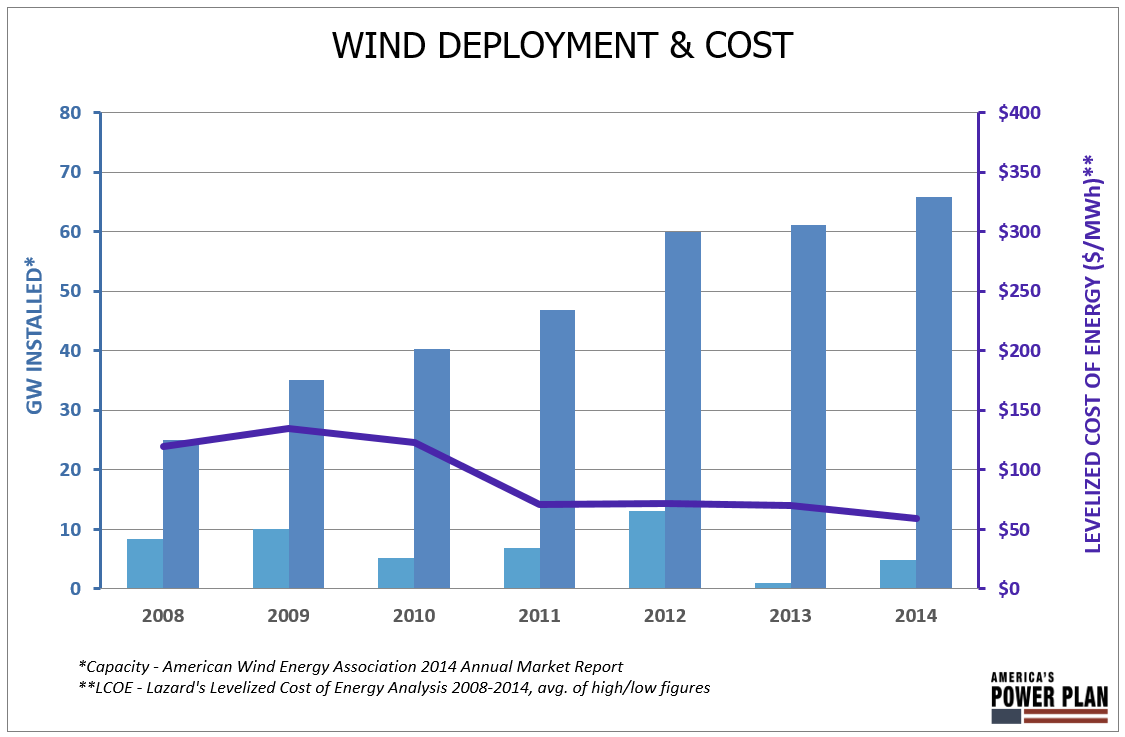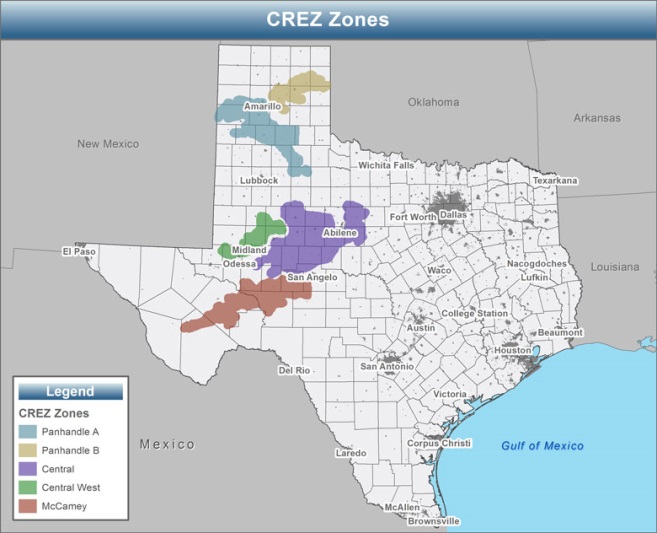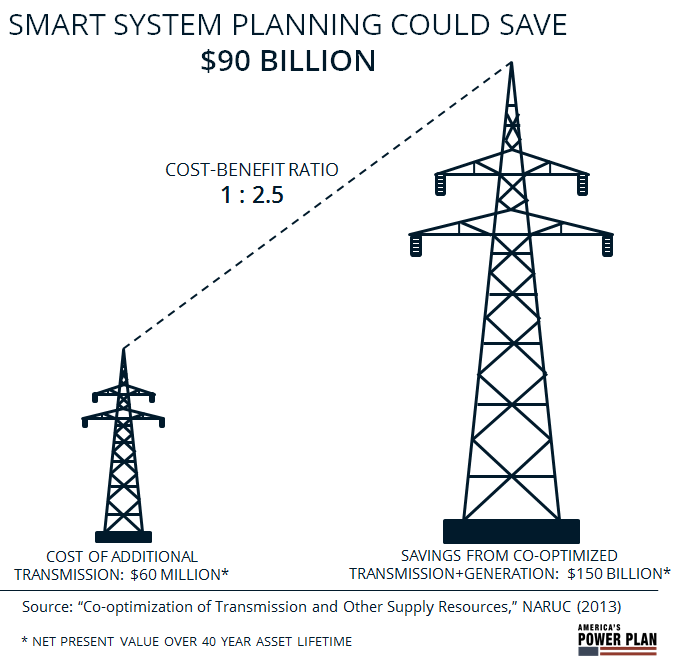A version of this article was originally published on September 23, 2015 on Greentech Media.

By Eric Gimon, Michael O’Boyle, and Sonia Aggarwal
If Charles Dickens were an energy analyst, he’d probably say the past ten years have been the best of times and the worst of times for wind power in America. Most observers would guess we’re referring to the on-and-off nature of the federal Production Tax Credit (PTC) which has created a chaotic investment environment for wind project developers and financiers. Yet comparing the two regions with similar total installed wind capacity adds another twist to the story: the importance of good transmission planning.
The Western Electricity Coordinating Council (WECC, which includes Western states and some Canadian provinces) and Texas have both seen healthy growth in wind power over the last decade. But since 2013, wind build-out in the Western U.S. states has slowed down while Texas wind continues to flourish. The lesson for transmission planning is clear: if you build it, wind will come.
Expanding the role of wind power
Since 2008, national average wind costs have fallen about 50 percent. And in some windy places, wind power has come online cheaper than the cost of existing generation resources, lowering electricity costs and pushing higher-cost conventional power off the system. For example, in December 2013, the Colorado Public Utilities Commission approved Public Service Company of Colorado’s acquisition of 450 megawatts (MW) of wind and 170 MW of solar generation, below the average cost of all the utility’s existing power generation plants. Wind is expanding its role as an important low-cost resource in general—especially given new Clean Power Plan requirements.
To access our nation’s rich (and often remote) wind resources, more transmission is needed. But existing regulations and planning processes are not getting us far enough. FERC Order 1000 was a step in the right direction toward better regional and interregional planning. Despite the Order, some regions remain unable to find consensus on whether benefits justify costs, how to allocate costs, and siting. These challenges stand in the way of much-needed transmission expansion.
Texas wind blows the West away
Comparing Texas with the West demonstrates how critical transmission can be for wind development. The following graph illustrates how wind capacity additions have all but died out since 2013 in the six largest wind states within the Western Electricity Coordinating Council (WECC) footprint while Texas has continued to climb:
While the staircase nature of several lines reflects the on-and-off effect of PTC expirations, it’s clear overall deployment rates diverge between the West and Texas. One underlying driver that helps to explain this divergence is the difference in demand growth – Texas has seen steady growth while demand has stagnated in the West. But given that low costs, Clean Power Plan compliance, and last week’s increase in California’s Renewable Portfolio Standard to 50% by 2030 provide a clear push for more wind power in the West, something else must be standing in the way.
One key difference between the regions was the 2008 creation of Texas’ Competitive Renewable Energy Zones (CREZ). CREZ designated specific areas as priority areas for renewable energy development. The state then built large transmission lines to bring more than 18 gigawatts (GW) of power from wind-rich regions in the northwestern part of Texas to major load centers, kicking off a renewable energy development bonanza that continues today.
Similar to a few of the WECC states, Texas has excellent wind resources and is able to deliver wind in the $20-23 per megawatt-hour (MWh) range, well below the average wholesale price for energy in most of the U.S. This has allowed some wind projects to thrive as “merchant power”, selling directly into the wholesale market without a long-term off-taker or power-purchase agreement. The CREZ has also unexpectedly enabled Texans to access solar power using the same transmission lines. ERCOT now projects more than six gigawatts of solar will come online by 2017 to help meet the state’s growing electricity needs.
WECC stalls while Texas moves forward
Two distinct patterns have emerged in wind deployment in the WECC region. In states with renewable portfolio standards (RPS) like California, Washington, and Colorado, progress continues, albeit somewhat subdued compared to growth in earlier years. Wind developers in California and Washington can take advantage of in-state production requirements, which can sometimes even serve as deterrents for interstate wind development. Colorado developers enjoy high quality wind sites and compete well with existing generation resources despite having to cover their own transmission costs.
Wind deployment in Oregon, Montana, and Wyoming, on the other hand, is stalled. Oregon is already on-track to meet its target of 25 percent renewables by 2025 (for large utilities), has no growth in electricity demand, and still seems to consider natural gas cheaper than in-state wind. Montana and Wyoming are both already major exporters of wind power (as well as coal) with plenty more low-cost wind to exploit, but both states have hit a wall on wind development due to insufficient transmission and muted demand.
There’s a chicken and egg problem here: The best wind resources are often far from electric loads, so transmission is needed to hook up resources and customers. No lines means no wind projects. But which comes first, the lines or the wind projects?
Take for example the Transwest Express, a proposed, 725-mile high voltage direct current (HVDC) line, enough to carry 3,000 MW of wind capacity from Wyoming through Utah, Colorado, and Nevada to California. A 2014 National Renewable Energy Laboratory analysis found the Transwest Express could save California customers about $2.3-9.5 billion over the useful lifetime of the project, even after the costs to site and build the line were included. Converter stations in Utah and at the Hoover Dam, if added, could also redistribute the high-quality (40 percent capacity factor) wind-generated electricity to customers in these areas. But Transwest Express, first proposed in 2005, is just now emerging from permitting and environmental impact assessment, and is still struggling to lock in firm purchase agreements and allocate up-front costs across the different states that would benefit from the line.
Of course, these kinds of institutional barriers to transmission are substantially fewer in Texas because it is a single state with much clearer cost allocation. However, experience in the Midwest has shown it is possible to streamline interstate transmission to support access to high quality renewable resources. The Midwest’s so-called “multi-value projects” (MVPs) are high-voltage transmission lines that assist Midcontinent Independent System Operator (MISO) members in meeting state renewable goals, fix reliability problems, or provide economic benefits in multiple pricing zones. MISO provides a default cost allocation methodology to streamline the transmission planning process.
Likewise, the Southwest Power Pool that operates markets from Nebraska down to New Mexico and Louisiana has successfully made the case that seemingly massive transmission investments quickly pay off as wind enters the market and provides lower costs for consumers. Of course transmission offers additional benefits on top of providing wind access to markets—a comprehensive overview of these benefits is provided in a WIRES report from the Brattle Group.
Proactively planning transmission to support access to priority renewable energy resources—like MISO and ERCOT do—could open the floodgates to low-cost renewables in other regions. One study prepared for the National Association of Regulatory Commissioners (NARUC) found co-optimization of transmission and generation planning could yield $90 billion in benefits over the useful lifetime of transmission assets.
Regulatory structures, access to markets, and fights over cost allocation stand in the way of a much more cost-effective electric system in many regions, and these issues also stand between clean, low-cost generation and the customers who would benefit. Until the West can build out some cross-state transmission lines in the appropriate areas, wind power growth is likely to remain suppressed, even where it is the lowest-cost generation option.
If WECC conducted an updated state-specific study of the potential economic benefits of major transmission projects under consideration within its footprint, perhaps the policy debate could shift away from how to allocate the smaller up-front costs, and focus on the real prize: how to allocate the larger long-term benefits, including access to world-class wind resources, across states.
+++
Thank you to Ron Lehr, John Jimison, Julia Prochnik, and Tom Darin for their input on this piece. The authors are responsible for its final content.




